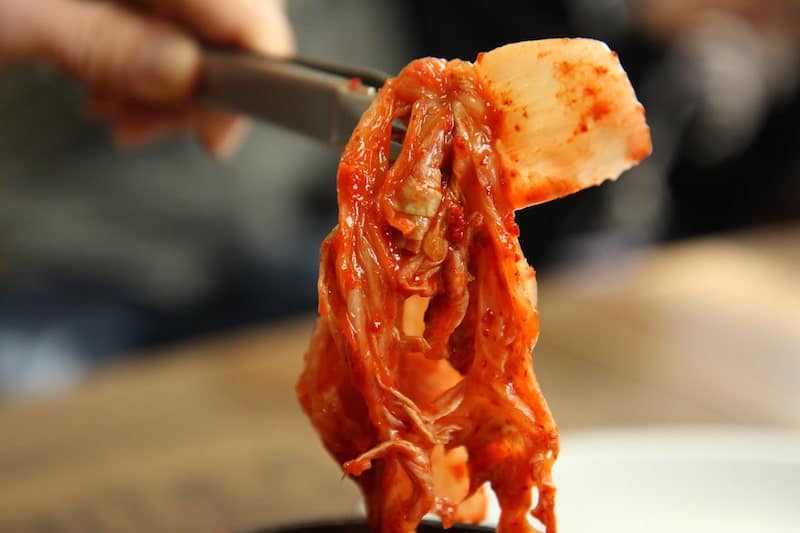What Causes Kimchi to Ferment?
Are you a fan of the spicy, sour, tangy deliciousness that comes with kimchi?
The flavors of kimchi are so complex, and this is largely due to the fermentation process that’s involved in making it. So what causes kimchi to ferment? Read on to learn more.
What Is Kimchi?
In the simplest terms, kimchi is fermented cabbage. It’s salty and spicy with a sour taste to it. The flavor of kimchi is very strong and tangy, and it has a pungent smell.
Kimchi originates from Korea. When it comes to Korean cuisine, kimchi is a staple. It’s widely used as a side dish and also a main ingredient in dishes like soup and fried rice.
The main ingredients in kimchi are napa cabbage, garlic, ginger, gochugaru (Korean red pepper flakes), salt and scallions. It can also have other ingredients like fish sauce or shrimp paste and radish or daikon.
Why Do You Ferment Kimchi?
The tradition of fermenting kimchi comes from when fermentation was an essential technique for preserving vegetables when vegetables weren’t available during winter months and appliances like refrigerators weren’t around.
Fermenting kimchi also maintains the fresh and crispy texture of the cabbage (and other vegetables used).
Not only that, but fermenting kimchi also gives it a wonderful umami, sour flavor. You can make fresh kimchi too, but the flavor is quite different.
Today, people also ferment kimchi for the probiotic benefits that come from the “good” bacteria that conduct the fermentation process. These bacteria have various health benefits, like improving gut and digestive health, when consumed.
How Does Kimchi Get Fermented?
Making kimchi is a two-step process:
- First comes brining to kill off the harmful bacteria
- Then comes fermenting to let the good bacteria work its magic
The cabbage (and other vegetables) are first salted or brined. This involves soaking the cabbage in salt and water solution, which draws the water out of the cabbage (sometimes too much water, click here to learn more).
Brining the cabbage helps in preserving it (water is a breeding ground for harmful bacteria to grow) and also helps the seasoning impart a stronger flavor onto the cabbage.
The fermentation process is then conducted by naturally existing good bacteria on the cabbage. These bacteria convert sugars that naturally exist in the cabbage into lactic acid, which creates an acidic environment.
Some avid kimchi makers will add sugar or a starter culture of bacteria to their kimchi to kick start the fermentation process and move it along much faster.
What Microorganisms Are In Kimchi?
The bacteria that conduct the fermentation process in kimchi are called lactic acid bacteria (called Lactobacillus). Another species is called the Weisella species, and there are plenty of others too.
These bacteria are called lactic acid bacteria because, as mentioned above, they convert the sugars in cabbage into lactic acid.
How Long Does Kimchi Take to Ferment?
Kimchi ferments at room temperature, and it takes about 1-2 days to ferment.
If kimchi is refrigerated for fermentation, the cold temperatures slow down the lactic acid bacteria, so the fermentation process will take longer.
In Summary
Now you know the basics about kimchi and what causes kimchi to ferment.
If you’re interested in learning more, be sure to check out my other articles about this delightful Korean cabbage!








